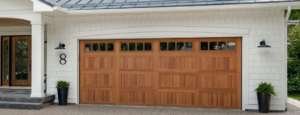Ace Mold Testing is the process of identifying hidden mold growth to help prevent potential health effects and structural damage. We can professionally test your home for fungal spores that may be contributing to symptoms like difficulty breathing.

Testing services typically run $75 – $150/sample (Genus Level Testing), with specialized tests like mycotoxins/endotoxin, ERMI and DNA type tests being more expensive. These services often include the interpretation of lab results.
Mold inspections are conducted by trained (and in some states, licensed) professionals with specialized equipment and expertise that enable them to detect mold growth in hard-to-reach areas. They also have the experience and understanding of how black mold specifically behaves, how it spreads and identifies its potential dangers to occupants. This depth of knowledge and insight is invaluable in identifying the extent of any existing problem, developing effective remediation strategies, preventing future mold complications and ultimately protecting property value.
The primary benefit of mold inspection is early detection. This can help homeowners understand and address the issue before it worsens, minimizing health issues such as unexplained allergic reactions or respiratory difficulties. Additionally, it can help prevent further structural damage to the home and prevent costly repairs down the road.
Mold inspection professionals also provide essential preventive advice based on moisture control, which is the foundation of eliminating mold. Their guidance on topics like promptly drying water spills, addressing humidity levels, and implementing air barriers can significantly reduce the risk of future problems.
In addition, mold inspectors can recommend a wide range of other protective measures for occupants and property. These may include items such as portable air filters and dehumidifiers, vapor barriers, sanding and refinishing wood surfaces, or introducing a variety of other preventative cleaning methods.
When scheduling a mold inspection, it’s important to inform occupants and ensure that they allow unobstructed access to all parts of the property. It is also recommended that occupants avoid cleaning or using disinfectant chemicals on the day of the inspection. Additionally, if possible, the inspector should be scheduled to visit on a day when rain is not forecast. This will avoid a moisture build-up that could affect the testing results.
After a thorough visual assessment and identification of potential mold and moisture issues, the inspector will collect samples for laboratory analysis. These samples can be collected using a variety of techniques, including taping small sections of the property and swabbing for suspect mold growth with a cellulose swab pre-soaked in a solvent. These samples are then sent to the laboratory for analysis, revealing the types and concentrations of mold spores in the sampled area. This information will then be used to develop a targeted mold remediation plan that addresses the specific type of mold present in the property.
Moisture Assessment
Moisture assessments are an important component of mold inspections. The reason is that molds usually grow in response to excess moisture. The presence of mold growth may be a clue to underlying problems such as leaks or inadequate insulation.
Moisture meters can be used to help find hidden sources of moisture that might not be visible or accessible during a visual inspection. These meters can measure the amount of moisture in a variety of building materials including wood, concrete and gypsum wallboard. They can also be used to locate moisture behind wallpaper and paneling, on the back side of drywall, in ductwork and ceiling tiles.
The use of a moisture meter in conjunction with a visual inspection can be very helpful in determining the source and extent of a mold problem. However, it is important to note that the use of a moisture meter alone can be misleading. This is because a number of factors can influence the readings obtained by a moisture meter such as surface porosity, temperature and the amount of water vapor in the air.
In most cases, the determination of whether or not a problem exists is best made through a thorough visual inspection. A qualified and experienced mold inspector will be able to recognize the signs of a problem such as stains, odors or moldy surfaces.
Depending on the situation, a professional mold assessor may choose to take an air sample from within the area in which the suspected mold growth is located. The samples are then analyzed either by an inspection microscope or cultured in a laboratory. These tests provide information regarding the concentration of mold spores in the air as well as the ability to identify specific mold species. However, air samples only tell you about the spores that were present at the time and location of the sampling and do not provide information about those spores that did not grow in the lab.
Spore counts or colony forming units (CFU) are often included in indoor air quality reports. These measurements are useful for telling you if the mold in your building is at a level that might be causing health symptoms for occupants. Unfortunately, the full range of health effects associated with specific molds is not fully understood at this time and occupants can have a wide variety of responses to exposure to varying levels of various types of mold.
Sampling
A professional mold inspector will collect both surface and air samples during the inspection. Air sampling involves using a spore trap to capture and analyze airborne mold spores, which can then be sent to the laboratory for testing. This method can determine what types of mold are present in the air, as well as the concentration of spores. It can also help identify areas where the concentration of mold spores is higher than in other parts of your home or building.
Surface sampling involves swabbing the surfaces of materials that may be affected by mold, such as walls or floors. This can identify the type of mold that is present but does not indicate how extensive the mold growth is or how toxic the mold is.
Bulk sampling is a more invasive sampling method that requires lifting or cutting away portions of a material, such as drywall or insulation, and sending them to the lab for analysis. This method can identify the genus and species of the mold, as well as the concentration of spores in the area. It can also be used to assess if a specific mold produces mycotoxins, which are fungi that have been known to cause health problems in humans.
When your mold test results are available, your inspector will explain the results to you. Your mold testing report will include a table with the types of molds found and their spore counts in your sample. It will also give you an idea of the overall spore count for your home, which is helpful for comparison with outdoor spore counts.
Your inspector will also note whether any of the molds in your sample are toxin producing, such as Stachybotrys and Memnoniella. The report will also include a column that shows the raw count, which is the number of mold spores in a cubic meter of air. This can be misleading because it doesn’t take into account those spores that are not alive or won’t grow on the incubation media used to test them. This information is still valuable because it can indicate the presence of potential health hazards that can be mitigated by proper remediation or prevention strategies.
Report and Recommendations
A mold inspection report will provide you with information about the types and concentrations of mold spores in your home. The information will likely be presented in a table format and will include the Mold Type, Raw Count, and Count/M3. The Count/M3 number is a calculation of the estimated number of mold spores per cubic meter of air based on the Raw Count numbers. The report may also list other information such as the Mold Score, which indicates whether or not the spores came from an internal source (such as inside the building) or an external one (such as outside).
Spore counts and culture results can identify certain types of mold particles but do not provide any indication about the health risks of these molds. It is important to remember that a complex mixture of mold particles naturally exists in all occupied indoor environments and that testing alone cannot distinguish between normal or problem conditions.
If your inspector recommends further tests, this is to ensure the correct steps are taken to find and resolve the problem quickly and effectively. The most common additional test is the ERMI or ARMI test, which utilizes a swab sample to determine the presence of mycotoxins. Specifically, these tests look for the presence of Stachybotrys and Memnoniella, which are commonly found together on water-damaged cellulose materials and produce mycotoxins.
Another possibility is DNA testing, which uses a swab to identify the type of mold based on its genetic makeup. This newer technology is still evolving, but it could eventually help to speed up the remediation process by identifying the exact type of mold that needs to be removed.
Mold growth and a musty odor can be indicators of a moisture issue that needs to be corrected. Mold spores can cause adverse health effects and structural damage, so it is always a good idea to take immediate action when necessary. Taking prompt action is especially important for those living in the home who suffer from respiratory illnesses or allergies. Follow the recommendations outlined in your inspector’s report to avoid future issues and protect your family from adverse effects.








